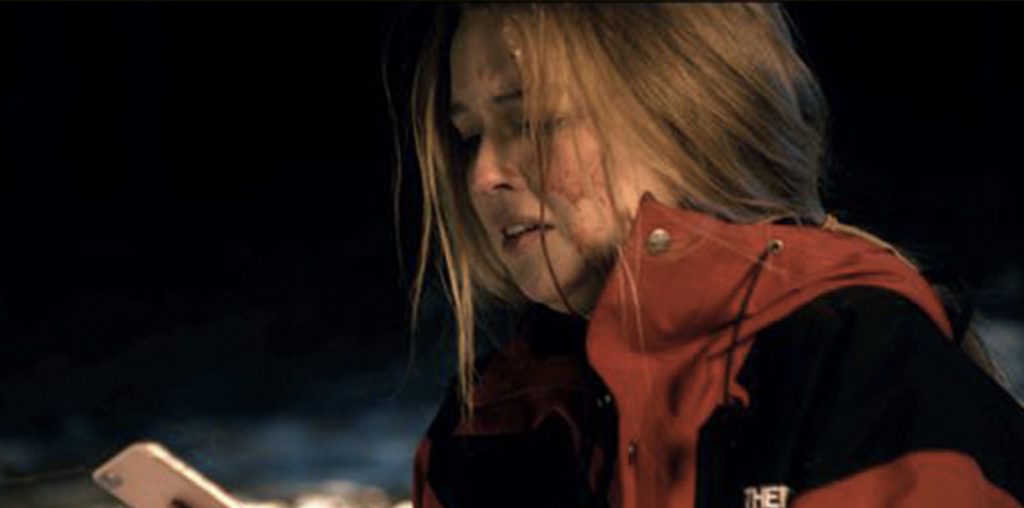
BOOTLEG FILES 232: “The Centaurs” (1921 animated film by Winsor McCay, of which only 90 seconds of fragments remain).
LAST SEEN: Available for viewing on several online sites.
AMERICAN HOME VIDEO: Included as part of a collection of McCay’s animated output.
REASON FOR BOOTLEG STATUS: The film (or what’s left of it) is in the public domain, so anyone can copy it.
CHANCES OF SEEING A COMMERCIAL DVD RELEASE: That McCay anthology is still out there – do yourself a favor and purchase that so you can see how these fragments fit into the filmmaker’s overall canon.
Every now and then, Film Threat pays tribute to motion pictures that either vanished completely or exist only in fragments. The number of lost films is staggering, ranging from the dawn of the silent era to as recent as the early 1970s. And each lost has its own curious and sad story attached to its disappearance.
“The Centaurs” is a particularly strange example of a lost film. Only 90 seconds of fragments remain, and very little is known about its production. Viewing the extant footage, it is difficult to imagine what the completed film could have been like. Yet the sheer strangeness of the surviving fragments contributes to a sense of wonder that makes “The Centaurs” difficult to ignore.
“The Centaurs” was one of the final works created by Winsor McCay, a pioneer of American animation. McCay was a celebrated cartoonist who made an easy transition from the printed page to the big screen. He successfully adapted his comic strip character of Little Nemo into a 1911 animated short, and went on to create two of the greatest films in animation history: the landmark “Gertie the Dinosaur” (1914) and the extraordinary propaganda masterpiece “The Sinking of the Lusitania” (1918).
Unlike contemporary animation studios, McCay was a solo artist who created all of the drawings for his films. By the standards of the era, McCay’s work was remarkably fluid and playful – most animation in the silent era was, sadly, not very special. It is easy to return repeatedly to McCay’s work – even by today’s CGI-fueled standards, his imagination and style remain peerless.
And, perhaps, that’s why “The Centaurs” is such a curious work. It bears no resemblance to McCay’s previous films. The concept and execution of the drawings and the quality of the animated movement have a completely different vibe and personality than “Gertie the Dinosaur” or his other early classics. Indeed, it would be easy to mistake “The Centaurs” for another person’s work.
What remains of “The Centaurs” is fairly opaque. In the 90 seconds of surviving footage, we see a pretty young female centaur casually walking through a forest. We see a handsome young male centaur walking along the ridge of a mesa. He stops, casually picks up a stone, and throws it into the air, striking a large bird and causing it to plummet to earth. There’s an elderly female centaur, complete with pince-nez spectacles and matted gray hair, who looks perturbed. The young centaurs hold hands and appear to be sweethearts. The elderly woman centaur gets consoled by an elderly male centaur (he’s bald with a long white beard), but their angst is calmed when the young male centaur returns with his new love. Everyone seems happy, particularly a rambunctious boy centaur who comes bouncing around with an excess of kick and energy. The footage ends with a close-up of the boy centaur (who is bald, like his grandpappy) and the words “Thank You” scrawled on the screen.
Okay, what does any of this mean? Since no shooting script survives, we can only guess. One could imagine the elder centaurs were upset over a possible accident or tragedy – their expressions of grief seem misplaced if they were simply bothered about their older son’s choice of lady friends. But if the young male centaur is a romantic hero, why is he throwing stones at birds? And what’s with the ADD-afflicted boy centaur, who bucks like a rodeo horse when everyone is gathered together?
The artwork in “The Centaurs” can also give one cause to wonder. McCay seems to have made a deliberate (perhaps self-conscious) effort to create a visually lyrical work. But the resulting drawings are actually among his less successful work. Granted, the concept of the centaur is ridiculous and few people have ever made a truly satisfactory depiction of the fabled half-human/half-horse (Walt Disney famously missed the mark with his excessively silly pastel-hued centaurs in “Fantasia”). But even working with this shaky foundation, McCay’s drawings in “The Centaur” are stiff, static and (quite frankly) rather ugly. The movement of the centaurs looks unnatural, as if the artist was baffled on how to approximate the equine gait. And the final moments with the boy centaur is particularly strange – the adult centaurs stand frozen while the wild youth bucks and kicks about.
Film historian John Canemaker has confirmed that McCay encountered unexpected technical problems with his later films, particularly with the stability of the cels used for the animation. This may explain why “The Centaurs” lacks the fluid motion of his earlier work. It is not certain if the surviving footage was meant as a test reel – if that was the case, it may explain a lot.
Alas, we’ll never know. From what anyone can determine, “The Centaurs” was left unfinished by McCay in 1921. There is no record that it was ever publicly screened. What is known is that the bulk of the footage deteriorated into dust due to negligent storage. The fact that 90 seconds of fragments survive is, by itself, a minor miracle.
“The Centaurs” was first presented to home audiences in the wonderful anthology collection “Winsor McCay: The Master Edition,” released by Milestone Film & Video. It appears that the proliferation of online videos based on these fragments was copied from this release. As a public domain work, there is no copyright violation in doing that. However, the online clips are woefully inferior to the version on Milestone’s DVD release. (It also makes more sense to include “The Centaurs” in such a collection, thus enabling a comparison with McCay’s other and better-known work).
It is highly unlikely that the lost footage of “The Centaurs” will ever turn up. In a strange way, it might be best for the film to remain as it is. In its incomplete and truncated state, “The Centaurs” is an elusive and puzzling mystery. The missing pieces contribute to its allure, which in turn will keep us coming back to it.
IMPORTANT NOTICE: The unauthorized duplication and distribution of copyright-protected material, either for crass commercial purposes or profit-free s***s and giggles, is not something that the entertainment industry appreciates. On occasion, law enforcement personnel boost their arrest quotas by collaring cheery cinephiles engaged in such activities. So if you are going to copy and distribute bootleg videos and DVDs, a word to the wise: don’t get caught. Oddly, the purchase and ownership of bootleg videos is perfectly legal. Go figure!

